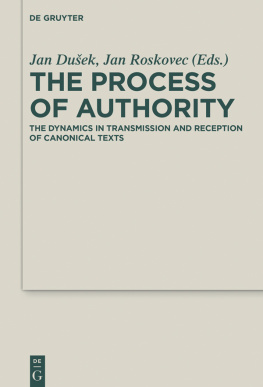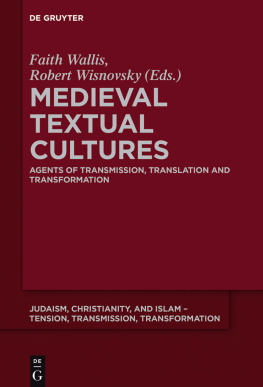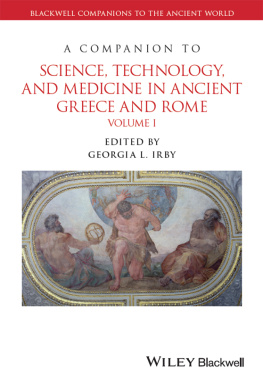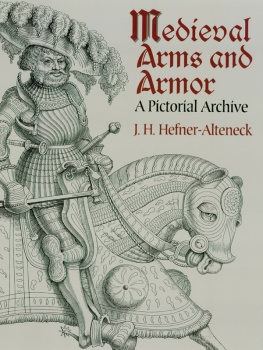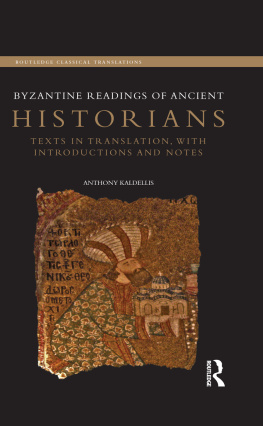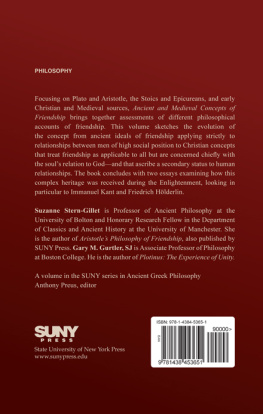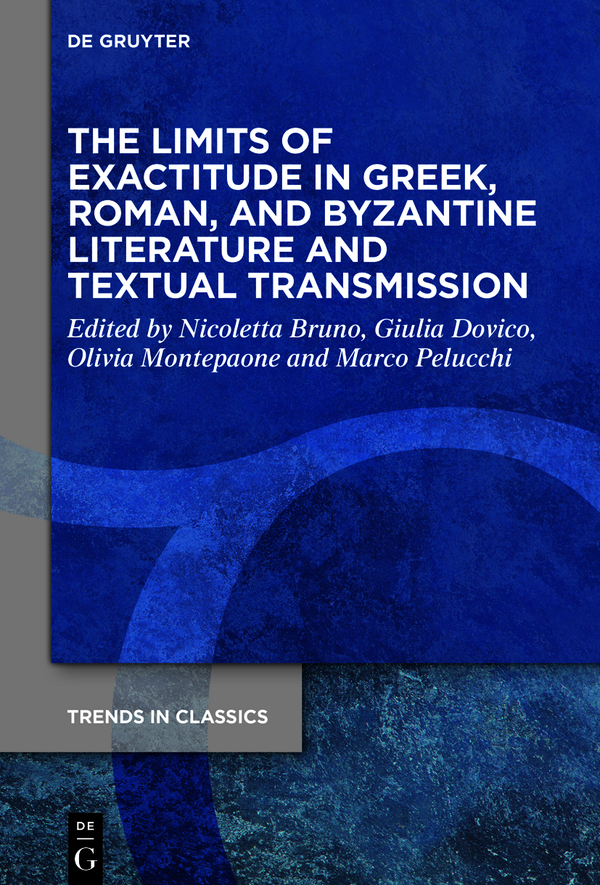Trends in Classics - Supplementary Volumes
Edited by
Franco Montanari
Antonios Rengakos
Volume
ISBN 9783110796513
e-ISBN (PDF) 9783110796612
e-ISBN (EPUB) 9783110796667
Bibliographic information published by the Deutsche Nationalbibliothek
The Deutsche Nationalbibliothek lists this publication in the Deutsche Nationalbibliografie; detailed bibliographic data are available on the Internet at http://dnb.dnb.de.
2023 Walter de Gruyter GmbH, Berlin/Boston
The Limits of Exactitude in Greek, Roman, and Byzantine Literature and Textual Transmission
Trends in Classics Supplementary Volumes
Edited by
Franco Montanari and Antonios Rengakos
Associate Editors
Stavros Frangoulidis Fausto Montana Lara Pagani
Serena Perrone Evina Sistakou Christos Tsagalis
Scientific Committee
Alberto Bernab Margarethe Billerbeck
Claude Calame Kathleen Coleman Jonas Grethlein
Philip R. Hardie Stephen J. Harrison Stephen Hinds
Richard Hunter Giuseppe Mastromarco
Gregory Nagy Theodore D. Papanghelis
Giusto Picone Alessandro Schiesaro
Tim Whitmarsh Bernhard Zimmermann
Volume 137
The Limits of Exactitude in Greek, Roman, and Byzantine Literature and Textual Transmission
Edited by
Nicoletta Bruno, Giulia Dovico, Olivia Montepaone and Marco Pelucchi

ISBN 978-3-11-079651-3
e-ISBN (PDF) 978-3-11-079661-2
e-ISBN (EPUB) 978-3-11-079666-7
ISSN 1868-4785
Library of Congress Control Number: 2022942860
Bibliographic information published by the Deutsche Nationalbibliothek
The Deutsche Nationalbibliothek lists this publication in the Deutsche Nationalbibliografie; detailed bibliographic data are available on the Internet at http://dnb.dnb.de.
2022 Walter de Gruyter GmbH, Berlin/Boston
Editorial Office: Alessia Ferreccio and Katerina Zianna
Logo: Christopher Schneider, Laufen
www.degruyter.com
Preface
The present volume stems from the fourth international conference of Prolepsis Association, The Limits of Exactitude, organized in Bari on December 19th20th 2019. Given the great success and wide participation in the conference, the governing board of Prolepsis decided to issue a call for contributions to a volume connected to the theme of the conference, allowing those who presented their papers in Bari to explore and discuss this very stimulating topic: Italo Calvinos definition of exactitude in the third of his Six Memos for the Next Millennium. We as the appointed editorial committee have selected, after a double-blind peer-review process, the following 18 contributions to form this miscellaneous volume expanding on the original purpose of the conference to further reflect on the possible applications of the concept of exactitude.
We would like to thank all participants in the conference in Bari and everyone who supported us with advice and comments in the peer review process.
We particularly extend our gratitude to Jon Arnold, Silvia Barbantani, Giovanni Benedetto, Mariapaola Bergomi, Francesca Romana Berno, Margarethe Billerbeck, W. Martin Bloomer, Mauro Bonazzi, Emilio Bonfiglio, Graziana Brescia, Emma Buckley, Alessandra Bucossi, Francesco DAiuto, Malcolm Davies, Chrysanthi Demetriou, Lorenzo DiTommaso, Tiziano Dorandi, S. Douglas Olson, Patrick Finglass, Lucia Floridi, Simona Fortuna, Alessandro Fusi, Fabio Gasti, Stefan Hagel, Maria Haley, Christina Maria Hoenig, Andr P.M.H. Lardinois, Jane Lightfoot, Giuseppe Lozza, Angelo Luceri, Gesine Manuwald, Clementina Marsico, Consuelo Martino, Boris Maslov, Franco Montanari, Anthony Ossa-Richardson, Rosa Otranto, Pasquale Massimo Pinto, Luigi Pirovano, Luisa Prandi, Enrico E. Prodi, Antonio Ricciardetto, Massimo Raffa, Michael D. Reeve, Licinia Ricottilli, Tim Rood, Biagio Santorelli, Claudia Schindler, John Sellars, Janja Soldo, Alan Sommerstein, Silvia Tessari, Chiara Torre, Mike Tueller, Anna Maria Urso, Emidio Vergani, Katharina Volk, Antje Wessels, Gareth Williams.
A sincere thank you to Jennifer Nelson for the precious linguistic review of the Introduction.
A warm thank you goes out also to the governing board of Prolepsis, as well as to all members of the association who have made the conference and this volume possible.
Finally, we wish to thank everyone at Walter de Gruyter, particularly the General Editors of Trends in Classics Supplementary volumes, Franco Montanari and Antonios Rengakos, for their precious support and trust.
Introduction: The Crystal and the Flame. Preliminary Remarks on Exactitude
Nicoletta Bruno
Giulia Dovico
Olivia Montepaone
Marco Pelucchi
Italo Calvinos work Six Memos for the Next Millennium (1988) has never ceased to elicit debate or stimulate reflection. In describing the third memo, Exactitude, Calvino uses the powerful images of the crystal and the flame borrowed from Massimo Piattelli-Palmarinis introduction to Language and Learning
The aim of the present volume is to shed new light on the possible definitions of exactitude, or better yet, the aspiration of reaching exactitude, and the undeniable limits to the achievement of this ambitious milestone. As the essays in this book will show, ancient and medieval authors have been dealing with the problem of exactitude vs. inexactitude sometimes openly, sometimes cryptically for centuries, and have been able to exploit the ambiguities related to these two concepts to various ends. These are two sides of the same coin: accuracy, clarity, and precision on the one side; ambiguity, vagueness, and ambivalence on the other. The limits may be shifted so as to obtain conceptions and definitions of exactitude tailored to specific contexts and aims, such as a consciously inexact definition of a political character in order to create an ambiguous profile or a boldly ambivalent speech left open to interpretation.
The limits of exactitude can be perceived in misuses and misapplications of this concept, which becomes an obstacle when, for instance, an excessively meticulous focus on details diverts attention from the essential, either in appearance, on purpose, or accidentally. In addition, exactitude is limited in its applications even if its opposite is preferred for functions and scopes defined by ambiguity, vagueness, and ambivalence. This concept is akin to Jean Cocteaus remarks in Le Mystre laic (1928), in which Cocteau describes Giorgio De Chirico as an accurate painter, who borrows from his dream the accuracy of inaccuracy, the use of truth to endorse falsehood. Metaphysical painting seems to be nothing but the cognitive reflection of a fictitious sensory perception: it arises from the ambiguity of the dream world, from its continuous shifting of space and physical dimension and the ethereal sedimentation of memory, of the experience of life itself.
In 1970 Dietrich Kurz had already proposed a systematic study on the notion of exactitude in the Greek world, limiting the analysis of the concept to texts from the 5th and the 4th century BC: a more general introduction sketches the story of the term exactitude () from a linguistic and literary perspective with occasional incursions in texts by sophists, orators, and dramatists, while in the following chapters, Kurz focused specifically on the texts by Hippocrates, Thucidides, Plato, and Aristotle. The complexity and longevity of such definition still prompts us to further explore its versatility and possible applications.



